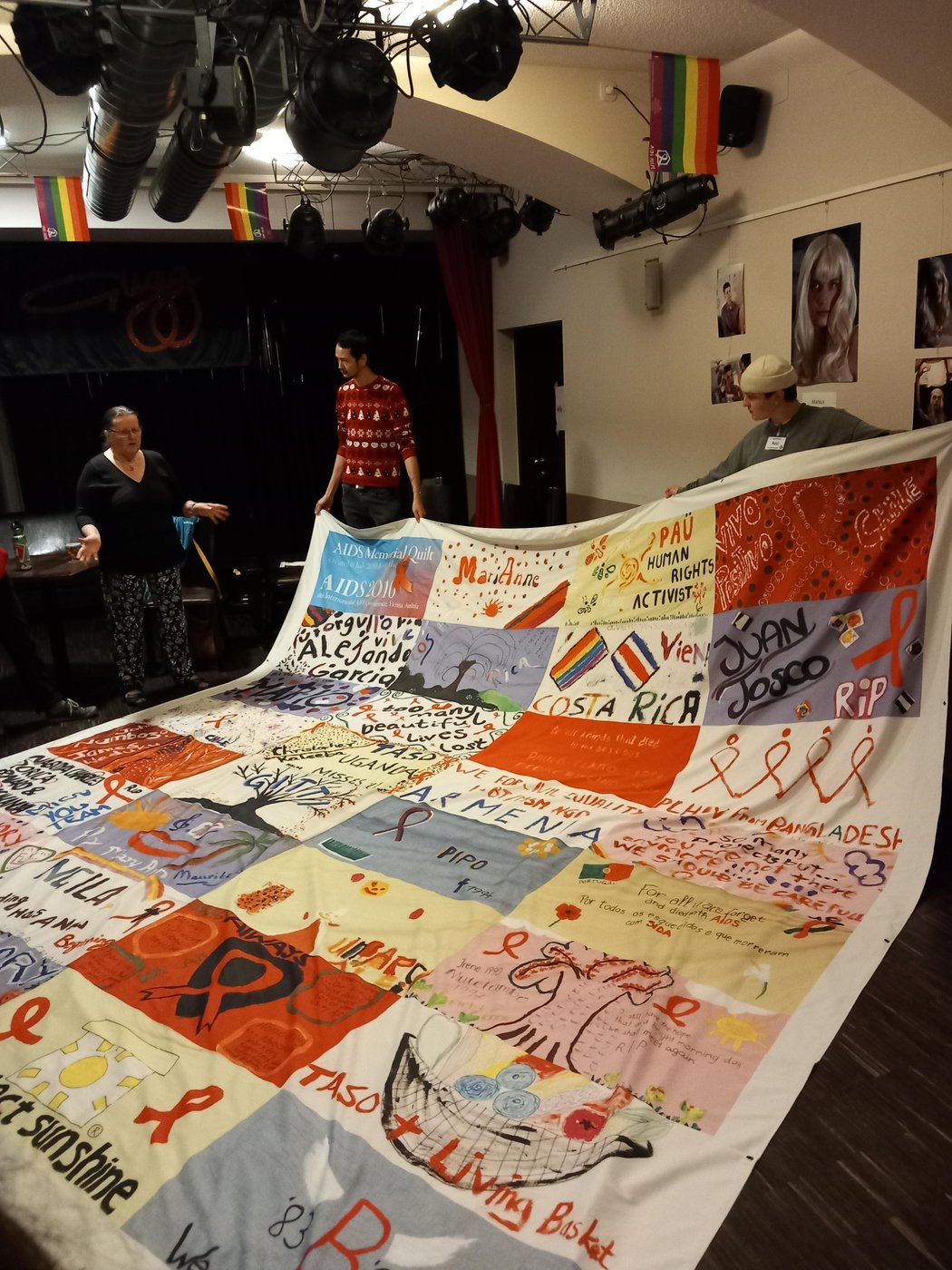Brigitte Zika-Holoubek and the Names Project Vienna
An event organized within the seminar on "AIDS, East Germany, EU, Global Capitalism, and Hardcore Theory" with a focus on sexuality, gender, resistance, and self-empowerment, led by Marina Grzinic and Elisa R. Linn.
Brigitte Zika-Holoubek, born in the summer of 1948, has a personal and vocational connection to Vienna’s LGBTIQ community. In the late 1980s, she supported over 600 people through their journey with HIV/AIDS, accompanying them until their deaths. This role connected her with HOSI Wien (Homosexual Initiative of Vienna), where activist Friedl Nussbaumer, who lost his partner Michael Handl to AIDS in June 1992, wanted to create a memorial in his honor. Thus, the Names Project was established, inspired by the original Names Project from the U.S., which began in 1985 and today consists of approximately 50,000 panels.
Moderation: Jupiter Rhea Braun is an artist whose work primarily spans performance, video art, writing, and the organization of various art venues. Under the pseudonym Lady Nutjob, Jupiter Rhea Braun also performs as a drag queen in various shows and activities for both adults and children.
Organized within the seminar on "AIDS, East Germany, EU, Global Capitalism, and Hardcore Theory" with a focus on sexuality, gender, resistance, and self-empowerment, led by Marina Grzinic and Elisa R. Linn.
From 1992 to 1994, Names Project Vienna grew to become the largest in Europe. Family members, friends, partners, and others grieving the loss of loved ones gathered in fabric workshops to sew memorial patches (90x180 cm) for each deceased person. These patches were then combined to form larger quilts (360x360 cm). Through these memorial patches, participants expressed their condolences and memories with creativity, and in the communal setting of making them together, mourners could share stories and support one another in their grief. To date, over 96 quilts with 360 names have been created.
Today, these quilts are displayed on memorial days and at traditional commemorative events. The first of these was held on December 1, 1992, World AIDS Day, when the quilts were shown at UNO-City Vienna. They have since been exhibited globally, including in Moscow, at Vienna’s Stephansdom, and at the opening of the Life Ball 2012 at the Rathausplatz in Vienna.
In addition, Brigitte visits schools and other institutions across Austria, educating about the HIV/AIDS crisis and working to dismantle the stigma surrounding the infection and its victims.
